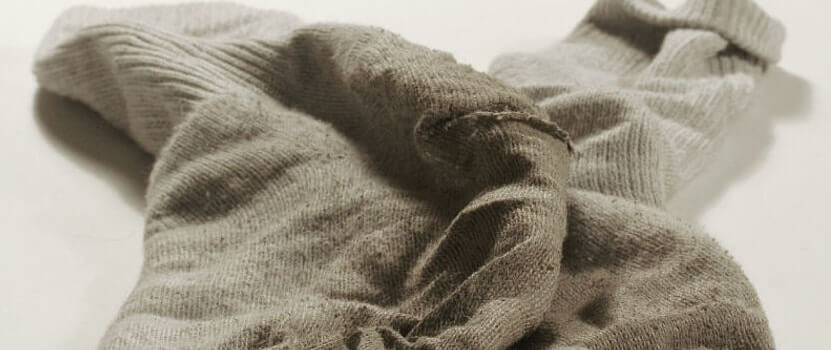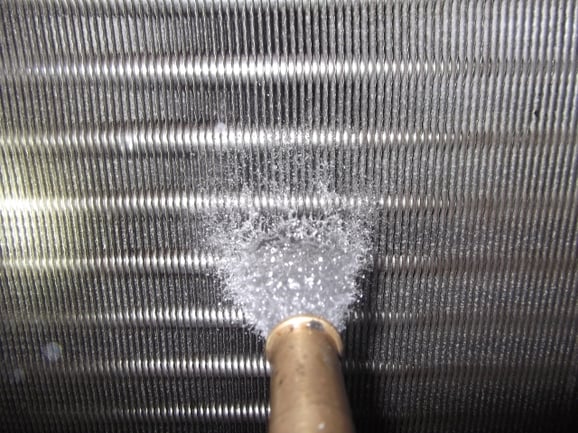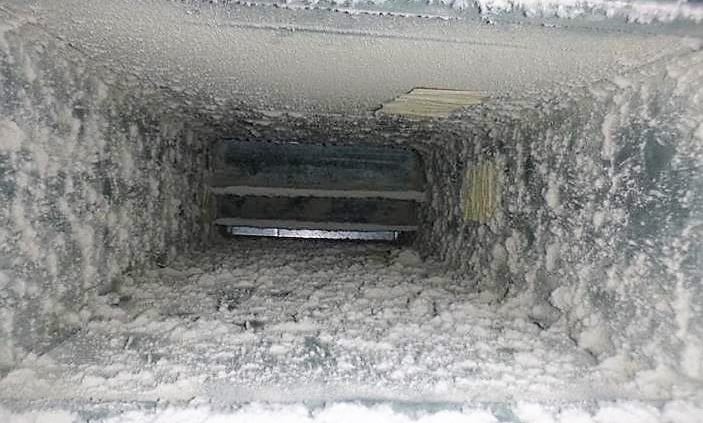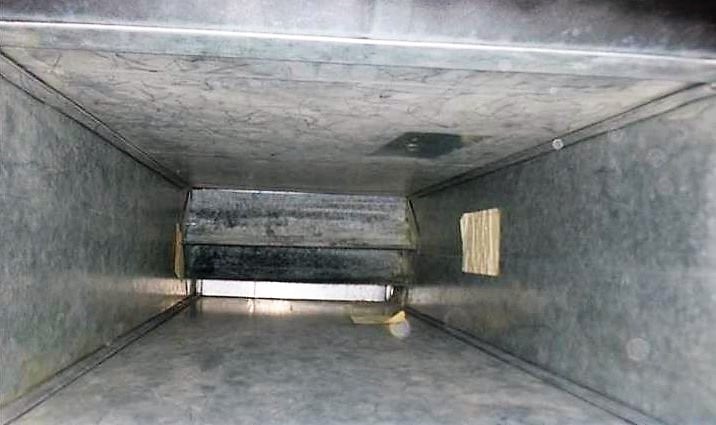No, we’re not talking about your week-old gym socks you forgot to wash! If you notice a foul, musky smell when your air conditioning unit is turned on, it could be suffering from a potentially harmful condition known as “Dirty Sock Syndrome.”

What’s That Smell?!
Dirty Sock Syndrome is caused by the build-up of mold and bacteria on an air conditioner unit’s evaporator coil. This happens after continued use, which provides the perfect growing conditions for mold and mildew. Especially this time of year, facility managers’ noses may notice something is not right when the HVAC unit goes from heating to cooling. If there’s an odor, that’s an indication mold and bacteria could be growing.
What’s the Cause?
An air conditioning system has two sets of coils: the condenser coils and the evaporator coils. A refrigerant is pumped through these coils, which serve to transfer heat and cool the air that flows over the coils. Since air is constantly flowing over these coils, they pick up dirt and dust from the moving air.

and dust will help improve your facility’s indoor ambient air quality.
Not only do microbes and fungus grow on the coil’s condensation, they feed off accumulated dust in your AC unit as a result of inadequate filtration. When the HVAC turns on, it blows the rotting microbes through the ductwork. The microbes don’t just smell bad; they can also cause headaches and health problems for people, especially those with COPD, asthma and allergies. In severe and prolonged exposure: lung disease and cancer.
What’s the Cure?
When accumulated dirt and debris is removed from an air conditioner’s coils, it eliminates the food source for the microbes and allows any condensation to evaporate. This, combined with ductwork cleaning, will get rid of any bacteria and mold in the HVAC system.


Commercial ductwork cleaning is recommended to remove airborne contaminants and allergens out of the air. The process should include points of air entrance to air exit, grilles, and registers. Once clean, your facility’s indoor ambient air quality will improve.
What’s the Benefit of Duct Cleaning?
Commercial duct cleaning also improves airflow, allowing your facility’s HVAC system to run more efficiently. This will also help reduce risks of HVAC system fires — especially in manufacturing facilities where combustible dust is present. According to the EPA (Environmental Protection Agency), a build-up of 0.42″ of dirt on a heating or cooling coil can result in a 21% decrease in efficiency! Dirty ductwork also loads filters quickly, leading to stress on the air handle, which could result in higher energy costs.1
So, if you smell ‘dirty socks’ when the air conditioning is running this summer, now you know it’s not someone’s misplaced gym bag. Your nose is telling you it’s time to have your HVAC system and ductwork cleaned!
Hughes Environmental’s OSHA-trained, certified, and experienced technicians perform HVAC and ductwork cleaning. Hughes Environmental is also National Air Duct Cleaner’s Association (NADCA) certified, and has Council-certified Indoor Environmentalists (CIE) and Council-certified Microbial Remediators (CMR) on staff.
To schedule commercial HVAC system and duct work cleaning, or other industrial cleaning or life safety services, contact Hughes Environmental: 888-845-3952 or online.
- Research done by the American Society of Heating, Refrigeration and Air Conditioning Engineers (ASHRAE) found that having HVAC coil cleaning performed on a commercial system can help save 25-55 percent on the operation costs of the unit.

